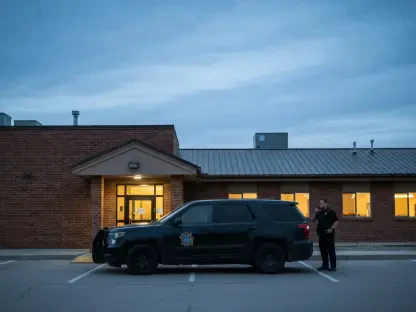As the energy sector continues to navigate complex regulatory landscapes and environmental concerns, few projects highlight these challenges as vividly as Commonwealth LNG’s export facility in Cameron Parish. Today, I’m joined by Desiree Sainthrope, a legal expert with deep experience in trade agreements and global compliance. With her extensive background in navigating the intricacies of regulatory frameworks and emerging technologies, Desiree offers unparalleled insight into the legal and policy hurdles facing LNG projects like this one. In our conversation, we explore the reasons behind Commonwealth LNG’s request for a four-year extension, the impact of regulatory delays during recent years, the role of legal challenges from environmental groups, and the broader implications for the U.S. LNG industry.
Can you walk us through the main reasons Commonwealth LNG is seeking a four-year extension for their export facility project in Cameron Parish?
Certainly. Commonwealth LNG has cited a combination of factors that were largely beyond their control, leading to significant delays in their timeline. The primary issues include unprecedented regulatory holdups during the Biden Administration, particularly with the Department of Energy approvals needed to trade with non-free trade agreement countries. Additionally, legal challenges from environmental groups have slowed progress. These hurdles have made it impossible to meet the original completion date of November 2027, prompting the request to extend the deadline to December 2031.
How did the regulatory delays under the Biden Administration specifically impact the project’s progress?
The delays were primarily tied to the Department of Energy’s approval process for exporting LNG to countries without free trade agreements with the U.S. Commonwealth’s application sat in limbo for an exceptionally long time—longer than any other U.S. LNG terminal developer, according to their filing. On top of that, the DOE implemented a formal pause on reviewing export applications to update their economic and environmental analyses. This pause further stalled Commonwealth’s plans, as their application was caught up in this broader reevaluation, creating a ripple effect on their project timeline and partnerships.
Speaking of the DOE approval process, what made Commonwealth’s experience stand out compared to other LNG developers?
What’s striking is the sheer duration of the wait. While Commonwealth secured DOE approval for trade with free trade agreement countries back in 2019, it wasn’t until February 2025 that they got the green light for non-free trade agreement countries. This extended delay—longer than any other developer—created uncertainty for investors and partners. It disrupted planning, delayed financial commitments, and likely strained negotiations with potential buyers who needed assurance that the project would move forward on a predictable schedule.
Let’s dive into the legal challenges. Can you explain the lawsuits brought by environmental groups after FERC’s initial approval in 2022?
Absolutely. Shortly after FERC unanimously approved the project in November 2022, several environmental organizations, including well-known groups like the Sierra Club and the Natural Resources Defense Council, filed lawsuits to halt the project. Their main argument was that FERC’s environmental review was inadequate, particularly in assessing the impacts of greenhouse gas emissions and nitrogen dioxide pollution from the facility. These groups contended that the project’s potential harm to the environment and public health wasn’t properly evaluated, which led to a significant legal battle over the approval.
After the U.S. Court of Appeals ruled that FERC’s 2022 environmental review was deficient, how did FERC respond to address those concerns?
The U.S. Court of Appeals for the D.C. Circuit, in July 2024, sent the case back to FERC, essentially saying their initial analysis didn’t meet the required standards for environmental impact assessment. FERC took this seriously and conducted a more thorough review, focusing on the specific issues raised by the court, such as greenhouse gas emissions and air quality impacts. By June 2025, they issued a second approval for Commonwealth to build and operate the LNG plant, this time with a more robust environmental analysis that aimed to satisfy the court’s concerns and withstand further legal scrutiny.
There’s been talk about the DOE approval being a step toward restoring regulatory certainty for LNG projects. Can you unpack what that term means in this context?
Regulatory certainty refers to the predictability and consistency of the approval process for energy projects like LNG terminals. When approvals take an unusually long time or get paused without clear timelines, it creates doubt among developers and investors about whether a project can move forward. The DOE’s eventual approval for Commonwealth in 2025 was seen as a return to a more orderly process, signaling to the industry that the U.S. is committed to supporting LNG development. This kind of certainty is crucial for attracting investment and ensuring that projects can secure long-term supply agreements with international buyers.
Commonwealth has secured supply agreements with several major companies. How do these partnerships influence the project’s trajectory?
These agreements, totaling 5 million tons per year with companies across the U.S., Europe, and Asia, are a game-changer for Commonwealth. They provide a guaranteed market for their LNG, which is essential for securing financing and demonstrating the project’s commercial viability to regulators and investors. Partnerships with such reputable entities also bolster confidence in the project’s long-term success, even amidst delays. They create a foundation for moving forward, showing that there’s strong demand for U.S. LNG on the global stage despite the regulatory and legal hurdles.
Looking ahead, what is your forecast for the future of LNG export projects in the U.S. given these kinds of challenges?
I think the future of U.S. LNG exports is promising but will continue to face a complex balancing act. On one hand, global demand for natural gas as a transitional energy source remains high, and the U.S. has the resources and infrastructure to be a leading supplier. On the other hand, regulatory scrutiny and environmental opposition are not going away. We’re likely to see more projects navigating similar delays and legal battles, but if agencies can streamline processes while still addressing legitimate environmental concerns, it could rebuild trust and encourage investment. The key will be finding a middle ground that supports energy security and climate goals simultaneously.









